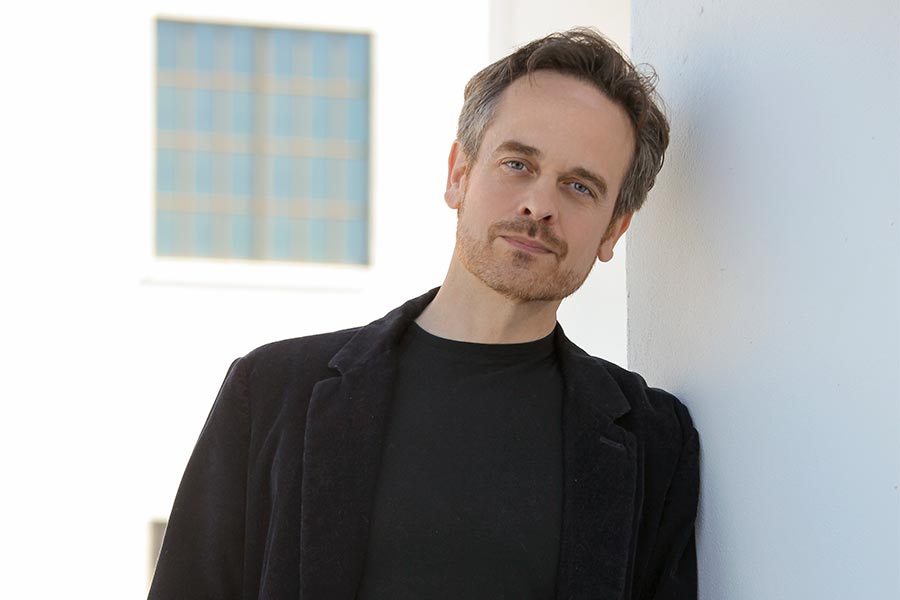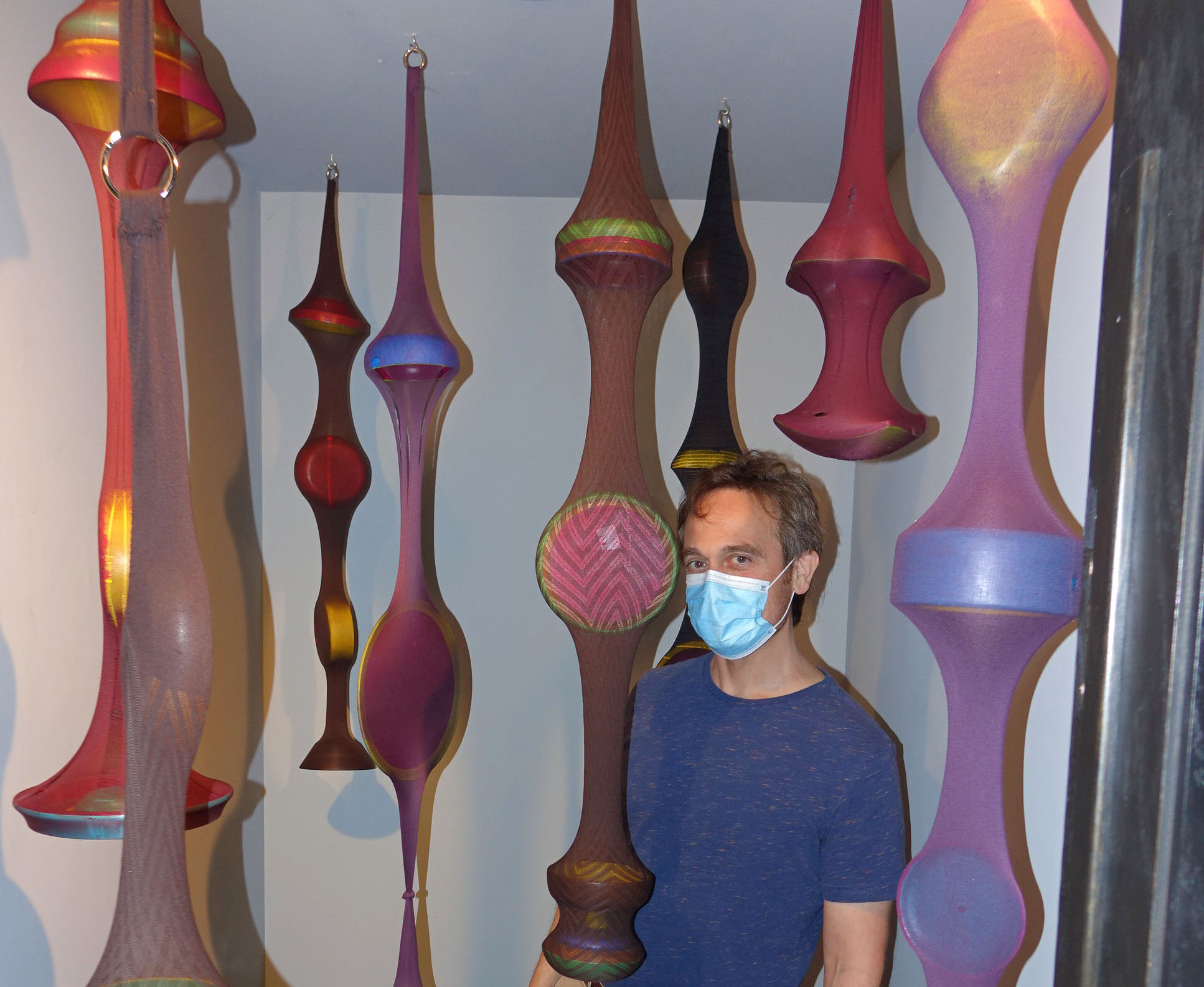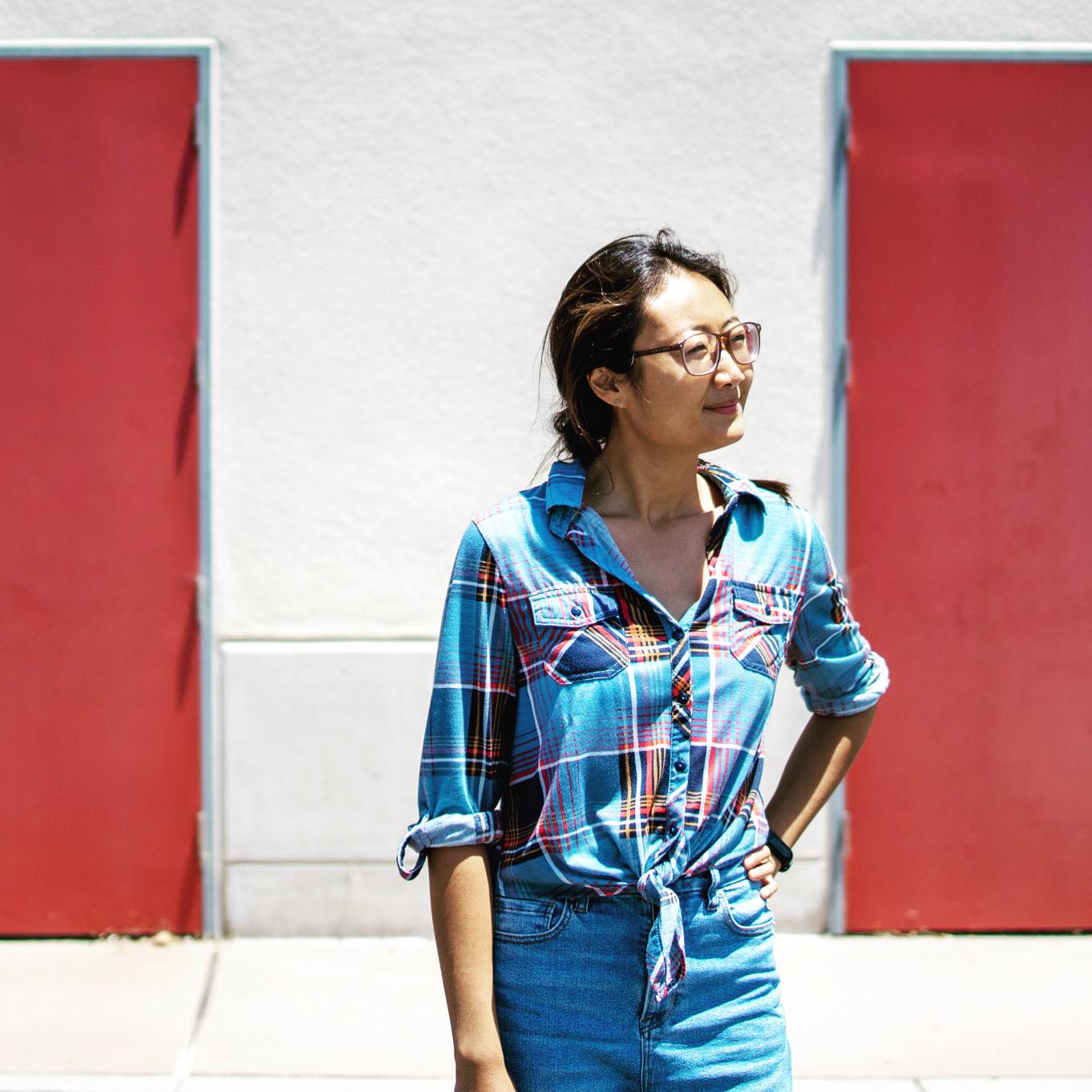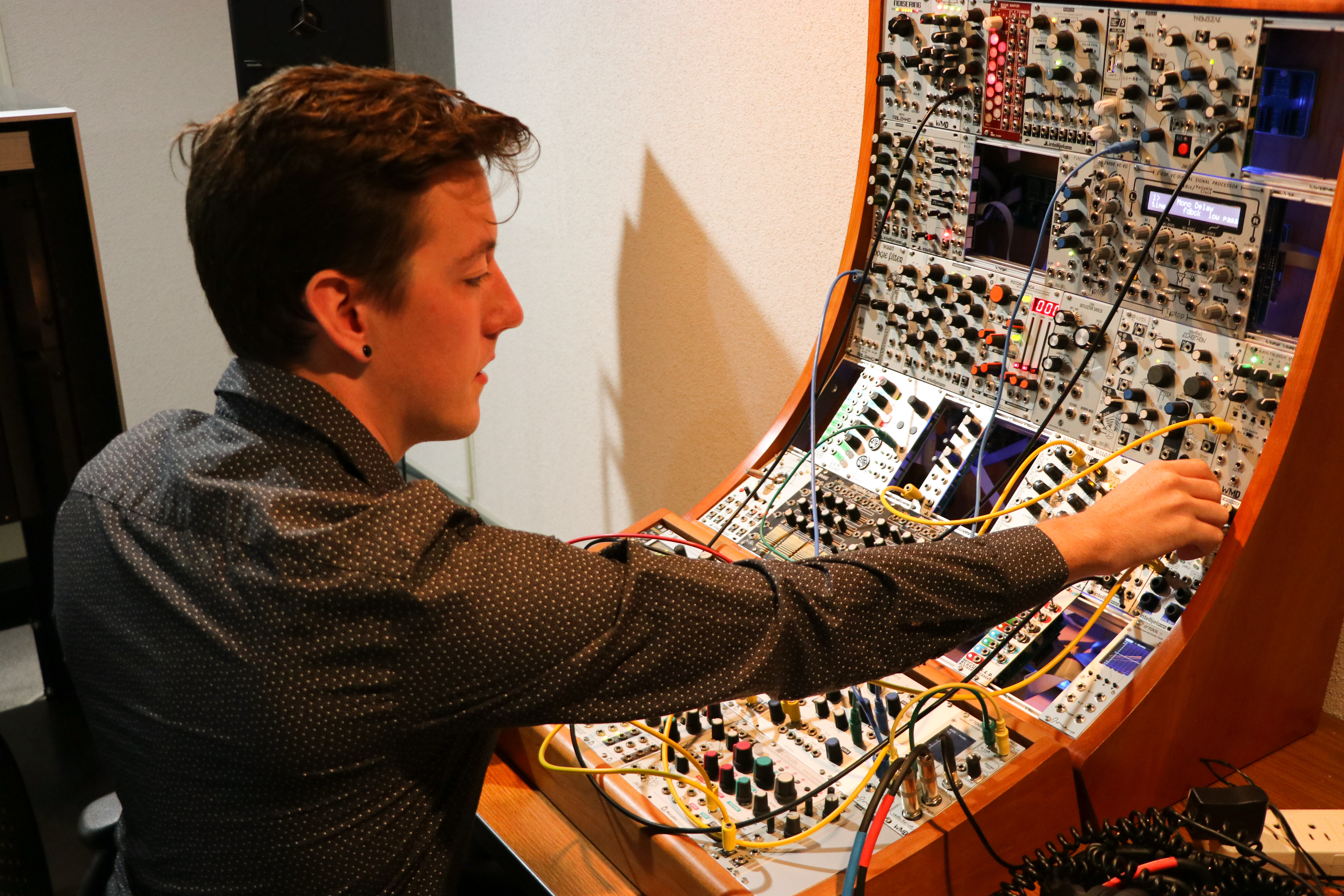
Dr. Marco Pinter '15 received a Ph.D. in Media Arts and Technology. Pinter creates artwork and performances which fuse physical kinetic form with live visualizations.
Pinter is also the Director of Software Innovation at Teladoc Health, and seeks intersections between medical technology and media arts, such as in his work in thermal imagery. His artistic research has been supported by grants from the David Bermant Foundation, the Interdisciplinary Humanities Center, the Santa Barbara Arts Collaborative, and the UC Institute for Research in the Arts. He has exhibited artwork and performances at cities around the world, including Dubai, New York, Montreal, Tehran, Hong Kong, Anaheim, San Diego and Santa Barbara. He is also founder and Executive Director of the Museum of Sensory & Movement Experiences, a Santa Barbara-based museum dedicated to interactive and media artworks. Pinter is a contributing author to The McGraw Hill Multimedia Handbook and The Ultimate Multimedia Handbook. He is an inventor on over 70 patents, issued and pending, in the areas of live video technology, robotics, interactivity and telepresence.
Marco, congratulations on the recent opening of the Museum of Sensory & Movement Experiences. We can only imagine how busy you must be so we appreciate taking some time to chat with us. How would you describe the opening of a new museum during a pandemic?
Marco: It was quite a challenge, but ultimately very rewarding. City procedures for build-outs can be very onerous, and since I was just starting in March of 2020, all the processes were moving online for the first time ever, making them even more complex and untested. But I was lucky to work with some great people from the different city departments.
Then of course there was opening under the California tier system. We finally opened in mid-October and then had to shut a month later. But we've now reopened and it's been very rewarding seeing the public back in the space.
In addition to your duties at the museum, you are also the Director of Software Innovation for Teladoc Health. Can you tell us about your experience at Teladoc and how you keep balance in your life?
Marco: I love having a balance of art and movement on the one hand, and science, technology and engineering on the other. I was the second software engineer at InTouch, over 18 years ago, and it's been great watching it grow and finally becoming part of Teladoc. When I felt the calling to become an artist almost a dozen years ago, the InTouch leadership was very supportive, and I owe a lot of that balance to them.
What drew you to pursue a Ph.D. in Media Arts & Technology?
Marco: Following on from the last question, I found my calling to be an artist about a dozen years ago. I was starting to create artwork in media and technology, and became aware that one of the top graduate Media Arts programs in the world was right down the road at UCSB. It was a perfect confluence of events.
What was your research focus at UCSB? Do you have any professors or colleagues that stand out from your time here?
Marco: My dissertation research centered around artistic exploration of perception, as well as choreographed robotic sculpture. My advisor was Marko Peljhan, and I also worked closely with George Legrady and my other committee members, Jane Mulfinger, Tobias Hollerer and Jack Loomis. It was an exciting mix of disciplines spanning Art, MAT, Computer Science and Psychology.

Marco posing with one of the works he curated into MSME -- Guardarropa, by UCSB MFA alum Elisa Ortega Montilla '18
What advice would you have for a graduate student or postdoc interested in following your career path?
Marco: Well, I'm not sure I'd ever advise anyone to follow my meandering and often chaotic career path. But for those wishing to balance a technical career with an artistic practice, I recommend finding a profession that allows that flexibility, and being diligent to always devote time to your artwork.
Do you have any hobbies or pursuits outside of the office/museum?
Marco: My own art practice is at the top of the list. Right now I'm working on a couple new pieces. One of them is a choreographed robotic sculpture in collaboration with a talented local sculptor who I met when she was in the UCSB MFA program.
Why do you give back to UCSB?
Marco: I was very fortunate to receive a Regents Central Fellowship that allowed me to pursue my PhD in the MAT program. I am grateful for that and the opportunity to work with all the MAT faculty and my student colleagues, and I am happy to help start a fund that will bring similar opportunities to future students.
-----------
The Museum of Sensory & Movement Experiences features the work of two talented graduate students, Xindi Kang and Rodney Duplessis. Their installation, entitled “Oscilla,” is an audio-visual experience that allows the audience to interact with a waveform with their own voice through a microphone, and experience both the acoustic and visual results.

Xindi Kang ‘17 is a researcher and artist working with interactive media. She is interested in interfacing between human and technologies through voice and movements. She designs experiences that inspire the users to see and hear themselves in different ways. Her research and professional interest lies in human computer interaction and user experience design. She is currently working towards her master's degree at the Media Arts and Technology program at UC Santa Barbara.

As a composer and researcher, Rodney DuPlessis MA '19 primarily explores the intersections of science, mathematics, software, and music. He is interested in creating powerful sonic experiences grounded in scientific models of physics, chemistry, biology, thermodynamics, and meta-science. His music has been performed and recognized internationally. As a programmer, DuPlessis develops synthesis, control, and sound transformation software that expands the artist's toolbox. He has also directed multiple festivals and concerts, and he is co-creative director of the Nomadic Soundsters art collective. His teachers have included Curtis Roads, Clarence Barlow, João Pedro Oliveira, and Martin Kutnowski. He's currently at UC Santa Barbara completing a PhD and MSc.
Thank you both for taking the time to answer our questions. Congratulations to both of you for having your artwork featured in the Museum of Sensory & Movement Experience. What are you currently studying at UCSB?
Xindi: Media Arts and Technology
Rodney: I'm a PhD candidate in Music Composition and I'm simultaneously completing a Masters of Science in Media Arts and Technology. My research in general revolves around confluences of science and art.
Can you tell us about your installation that is titled “Oscilla?” What was the inspiration in telling your story through this medium?
Xindi: I was fascinated by the effect vocalization and audio-visual feedback have on people. Oscilla was made for the audience to explore their own vocal potentials, as well as gaining insight on how sound is represented visually. It’s been a pleasure to see people who are rather vocally reserved to open up to Oscilla and experiment with their own voices.
Rodney: Right, like Xindi said, it's really about what happens to the audience when they interact with Oscilla. It's a machine-human duet, and there really is a feedback between the two that makes for an interesting dynamic. The "story" really comes from the audience member's experience of discovery and self-discovery. When you first approach Oscilla, it's silent and still, but it springs to life visually and sonically when you make sound into the microphone.
How has your experience outside of the classroom influenced your research at UCSB?
Xindi: Personally I have benefited tremendously from experiences outside the classroom. As our program is well connected with resources from the general media arts community, I was able to participate in workshops such as the Vector Hack Workshop, the one in which Oscilla was first created. Information on related conferences, exhibitions and seminars are also constantly circulated around the department, exposing me to all kinds of opportunities to further my knowledge on my research.
Rodney: It's the same for me. Actually I would say the majority of my growth at UCSB has happened outside of the classroom. Outside of classes I've been fortunate to collaborate with other artists like Xindi as well as scientists and software developers. There have been opportunities for presenting work like Marco's museum, SBCAST, various concerts and conferences, and my work has been influenced a lot by conversations with my colleagues. My UCSB experience has really been defined by the brilliant people I've connected with, rather than any particular classes.